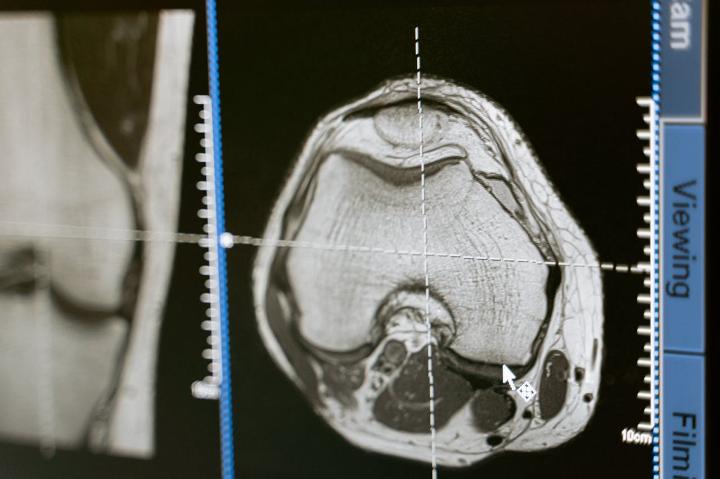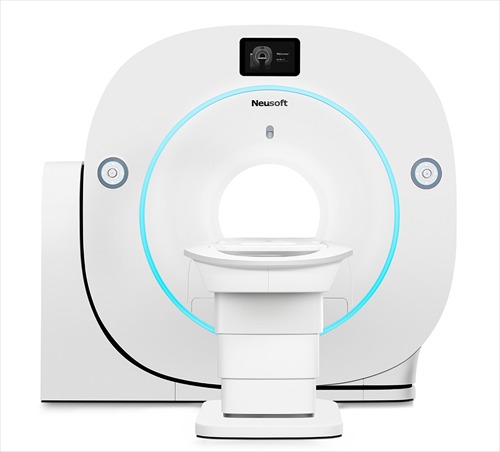Magnetic Resonance Imaging (MRI) has become a cornerstone in medical diagnostics, offering precise, non-invasive insights into the body’s inner workings. With advancements in MRI technology, it's essential for patients and medical professionals to understand the science, applications, and safety of MRI machines. In this blog, we’ll answer frequently asked questions from sources like Quora and research, to provide a comprehensive guide on MRI machines.
1. What is an MRI Machine and How Does It Work?
Magnetic Resonance Imaging (MRI) uses powerful magnetic fields and radio waves to create detailed images of internal structures. Unlike CT scans and X-rays, MRI does not use ionizing radiation, making it a safer option for repeated imaging, particularly of soft tissues like the brain, spine, and joints(Questions and Answers in MRI)(Advanced Orthopaedic Associates).
| Feature | MRI | CT Scan | X-Ray |
|---|---|---|---|
| Type of Imaging | Magnetic fields & radio waves | Ionizing radiation | Ionizing radiation |
| Best for Imaging | Soft tissues (brain, muscles, etc.) | Bones, lungs, abdomen | Bones and hard tissues |
| Radiation Exposure | None | Low to moderate | Low |
| Procedure Time | 30-60 minutes | 5-10 minutes | 2-5 minutes |
Key Components of an MRI Machine:
- Magnet: The core of the MRI machine, responsible for aligning hydrogen atoms in the body.
- Gradient Coils: These create the loud knocking sounds by varying the magnetic field.
- Radiofrequency Coils: Transmit signals that are used to generate the images(Medical Imaging Source).
2. When and Why Do Doctors Recommend MRI?
MRI is an essential diagnostic tool, particularly for imaging soft tissues, detecting tumors, and assessing brain and spinal cord injuries(Advanced Orthopaedic Associates). It is also the preferred choice for many neurological disorders and joint conditions like ACL tears, rotator cuff injuries, and herniated discs.
Common Uses of MRI:
- Neurology: Brain tumors, multiple sclerosis, stroke
- Orthopedics: Joint injuries, spinal injuries
- Cardiology: Heart defects, cardiac muscle conditions
- Oncology: Tumor detection and staging(Smart Scan Medical Imaging)
MRI is superior for soft tissues, while CT scans are preferred for imaging dense structures such as bones and lungs.

3. Is MRI Safe?
MRI is considered a safe, non-invasive imaging technique because it doesn't use ionizing radiation. However, certain precautions are necessary due to the powerful magnetic fields involved.
Potential Risks:
- Gadolinium-based contrast agents (GBCAs): These are used to enhance MRI images but may cause allergic reactions or other side effects in rare cases(Amber Diagnostics).
- Claustrophobia: Many patients experience anxiety in the confined MRI tube. Solutions include open MRI machines or sedatives(Smart Scan Medical Imaging).
- Implants and Metal Objects: Patients with pacemakers, cochlear implants, or any metallic objects must inform their physician, as MRI can cause interference or heating in these objects(Amber Diagnostics)(Smart Scan Medical Imaging).
| Factor | Safe? |
|---|---|
| Radiation Exposure | None |
| Gadolinium Contrast | Safe with precautions |
| Metal Implants/Pacemakers | Requires careful screening |
| Claustrophobia Risk | Mild, mitigated by open MRI or sedation |
4. Addressing Common Patient Concerns
Claustrophobia and MRI Machines
The closed, tube-like structure of MRI machines can cause anxiety in some patients. Open MRI machines are an alternative, offering more space and less discomfort while still providing high-quality imaging. Sedation or music therapy (listening to music via headphones during the scan) are other common solutions for alleviating discomfort(Smart Scan Medical Imaging).
Why Is the MRI So Loud?
The noise comes from the gradient coils that rapidly switch on and off during the scan. To protect patients' hearing, they are given earplugs or noise-canceling headphones(Advanced Orthopaedic Associates).
How Long Does an MRI Take?
The procedure typically lasts 30-60 minutes, but advanced machines are reducing this time, with some body part scans completed in as little as 15-20 minutes(Amber Diagnostics)(Advanced Orthopaedic Associates).
5. Preparing for Your MRI: What to Expect
Before your MRI, you’ll need to remove any metallic objects (jewelry, piercings, glasses) and may need to change into a hospital gown. Patients with implants or medical devices should provide their medical history to the MRI technologist to ensure safety(Smart Scan Medical Imaging).
Tips for a Smooth MRI Experience:
- Clothing: Wear loose, comfortable clothing free of metal zippers or buttons.
- Medical History: Disclose all prior surgeries, implants, or conditions like pacemakers to avoid complications.
- Diet and Medication: In most cases, no fasting is required unless specified for certain scans involving the abdomen(Advanced Orthopaedic Associates).
6. MRI vs. Other Imaging Modalities: A Quick Comparison
| Imaging Modality | Uses | Pros | Cons |
|---|---|---|---|
| MRI | Soft tissue (brain, muscles) | No radiation, detailed soft tissue | Lengthier, expensive, noisy |
| CT Scan | Bones, lungs, abdomen | Quick, good for emergencies | Radiation exposure |
| X-Ray | Bones, chest | Fast, inexpensive | Limited detail for soft tissues |
| Ultrasound | Soft tissue, organs | Real-time imaging, no radiation | Limited to certain body parts |
7. Frequently Asked Questions About MRI Machines
- Why is MRI more expensive than CT or X-ray?
MRI technology involves complex machinery and longer scan times, making it more expensive than quicker alternatives like CT scans(Smart Scan Medical Imaging).
- Can MRI detect cancer?
Yes, MRI is highly effective at imaging soft tissues and detecting abnormalities like tumors, often at earlier stages than other imaging technologies(Questions and Answers in MRI).
- What is the weight limit for MRI?
MRI machines typically have a weight limit of around 250 kg (550 lbs), although this can vary depending on the model(Advanced Orthopaedic Associates).
Conclusion
MRI machines have revolutionized the way we diagnose and treat a variety of conditions, offering detailed, non-invasive images without radiation. While there are some precautions and potential risks, MRI remains one of the safest and most effective imaging tools available.
Whether you're preparing for your first MRI or exploring options for medical diagnostics, understanding the ins and outs of MRI machines can help you make informed decisions about your healthcare.

